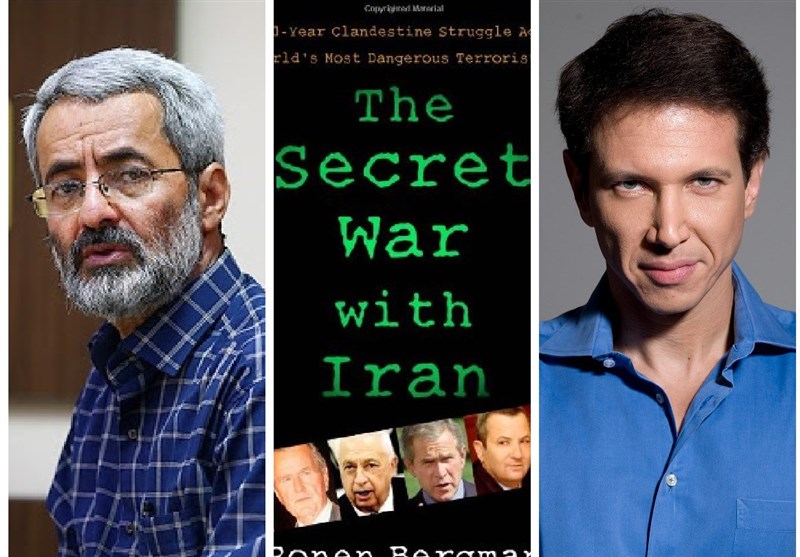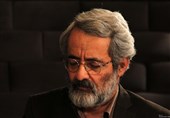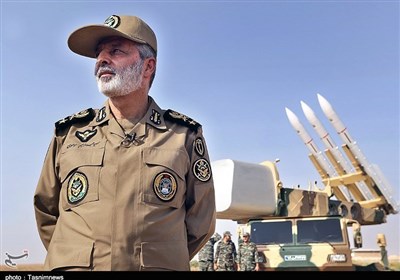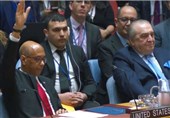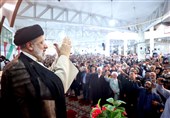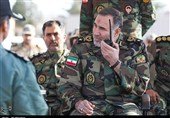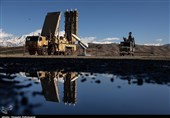An Argument against Ronen Bergman’s 'The Secret War with Iran' – 19
TEHRAN (Tasnim) – Zionist media never during the eight-year period of Iraqi imposed war on Iran acknowledged Saddam’s use of weapons of mass destruction like cyanide chemical weapons or missile raid on residential areas like hospitals and schools.
Iranian journalist and expert Abbas Salimi Namin has disproved the claims and opinions of Israeli analyst Ronen Bergman in the book ‘The Secret War with Iran’. ‘The Secret War with Iran’, written by renowned Zionist journalist Ronen Bergman, was published in 2008 by Simon & Schuster publishing company in the United States.
Born in 1972, Bergman is a graduate of Tel Aviv University in the Middle East political relations. He is a famous Zionist journalist and analyst in the military and security fields who has worked with Israeli newspapers ‘Haaretz’ and ‘Yedioth Ahronoth’, American dailies and weeklies such as ‘The New York Times’, ‘Newsweek’, ‘The Wall street Journal’, and British media groups including ‘The Guardian’ and ‘The Times’.
Bergman has been interested in topics relating to the enemies of the Zionist regime (particularly Iran, Hezbollah and the Palestinian resistance groups), as well as subjects on the history of the Israeli regime’s assassination operations, which are cited in his recent book ‘Rise and Kill First’.
In an interview with Persian TV channel ‘Iran International’, Bergman has pointed to the Iranian nuclear program and the issues surrounding it -particularly the Zionist regime’s secret attempts to halt the process of nuclear activities in Iran and assassinate Iranian scientists. He has also cited ex-CIA chief Michael Hayden as saying that the assassination of nuclear scientists is the best way to impede Iran’s growing process in that field, and has implicitly held Israel responsible for it.
In the book ‘The Secret War with Iran’, Bergman has written a history of encounters between Iran and the Zionist regime, while the bulk of the book relates to the Lebanese Hezbollah -Iran’s main ally in the battle against the Zionist regime since its formation until the 33-day War- focusing on the role of Martyr Imad Mughniyeh.
His book also includes sections about the final years of the Pahlavi regime and victory of the Islamic Revolution in Iran, short periods of the war imposed by the Ba’thist party of Iraq on Iran (focusing on the McFarlane affair), Iran’s role in supporting the Palestinian groups, and the Iranian nuclear program.
Bergman’s multiple undocumented and untrue comments as well as personal and purposeful analyses (with the main purpose of displaying Israel’s power, especially in a competition with the US) that have repeatedly come in his book make a critical review of the book necessary for Iranian readers.
Director of the Iran History Studies and Compilation Bureau, Abbas Salimi Namin, has written an extensive criticism in a book about ‘The Secret War with Iran’. Born in 1954, Salimi Namin is an experienced journalist and a renowned Iranian researcher in history and political sciences who has published many articles and books.
About ‘The Secret War with Iran’
Part 19:
But the important thing with so-called Operation Seashell is that an Argentinean plane carrying military components to Iran reportedly crashed. Bergman’s account is as follows:
“The mystery of the plane’s crash on that remote Armenian mountainside remains unsolved to this day. A combined Mossad–Defense Ministry investigation concluded that all signs indicated the Soviet Union was responsible. One view is that the aircraft penetrated Soviet airspace in error, and was shot down. A second is that the Russians had learned of the arms shipments to Iran and viewed them as an extension of America’s long arm in the Middle East, and so they intentionally intervened. Yet another hypothesis, for which no serious foundation exists, was that a very prominent American media figure who was visiting Israel at the time heard about the operation and found it so objectionable that he leaked its details so that the Iraqis got wind of it, and it was they who shot the plane down.” (Chapter 3, p. 61)
Regarding possibilities held out by the author, several points may be recalled: First and foremost, the first and second hypotheses of blaming the Soviet Union for the Argentinean aircraft blast are the same, but various reasons are forwarded for them. Second, delivery of components to Iran despite US sanctions was not aimed at boosting Washington’s regional standing, particularly because the Iranian nation had dealt an irreparable blow to US hegemony through its revolt and taken steps towards undermining the hegemony of the White House and its regional base. Third, even if Saddam is held responsible for the downing of the Argentinean plane, the flight information must have been communicated to Baghdad by Israel through an American (as noted in the hypothesis). Fourth, why shouldn’t the Zionists themselves be a strong likelihood? One the one hand, Bergman says the plane’s case remains shrouded in mystery, but on the other hand, he contradicts himself, saying Mossad and Israel’s Defense Ministry hold the Soviet Union responsible for the incident.
After fabricating stories about Israel’s so-called positive role in Iran’s purchases on the black market, Bergman finishes this chapter with his fabricated imaginations: “With the outbreak of the Iran-Iraq War, the Israelis faced a classic conundrum in foreign policy: If two of your enemies are fighting each other, whom should you help? It can be hard to sit on the sidelines, rooting for a draw, and it is somewhat understandable that key Israelis feared a total victory by Saddam Hussein.” (Chapter 3, p. 63)
In order to shed light on the aspects of Bergman’s falsehoods, we have to take a look at the emergence of Saddam Hussein in a country with a fully Eastern bloc structure. Under USSR-leaning President Ahmed Hassan al-Bakr in Iraq, Israel and Mohammad Reza Pahlavi proceeded with a plan which painted a hero image of Saddam who has prevented the collapse of his nation. It is known that the Zionists had taken advantage of the Kurdistan region to provoke Iraqi Kurds against the central government. Once Baghdad found itself frustrated with civil war, Israel offered arms to Kurds. In an unconventional move, the Shah sat down at the negotiating table with a lower-ranking official, i.e. Saddam. In fact, this gesture of sacrifice on the part of Mohammad Reza Pahlavi was conducted within the framework of a scheme to promote the favorable person in the Baathist regime as the protector of the Iraqi territorial integrity. Under the same plan, the Zionists first moved Mustafa Barzani to Karaj and then let Saddam massacre Kurds. The last regional head of Mossad in Tehran puts it as follows: “One instance of our mutually fruitful cooperation was the Israel-Iran-Iraqi Kurds triangle (the US was partially involved). This triangle assisted Iraqi Kurds in their long battle against Iraq’s Central Government and let them largely contain Iraq’s aggressive nature.” (Big Satan, Small Satan, Eliezer Tsafrir, translated by Farnoosh Ram, Autumn 2007, Ketab Corps., Los Angeles, p. 27)
As the Mossad agent acknowledges, Saddam managed to unseat al-Bakr and become president of Iraq. But after Saddam’s coming to power, did Iraq’s aggressive nature grow or drop? The answer is clear. Nobody is found more savage than Saddam in the Baghdad government. Therefore, by “contain”, Tsafrir means a shift from East to West. That may explain why in the aftermath of the Islamic Revolution in Iran, all USSR-leaning nations, except Iraq, welcomed the failure of the US and the downfall of the Shah in Iran, and regional countries were rejuvenated by this important event and moved to establish positive ties with Iran’s new government within the framework of the Resistance Front comprising Syria, Libya, Lebanon, Algeria and Palestine Liberation Organization (PLO). But Saddam-ruled Iraq did not join the anti-Zionist front, rather it adopted the most hostile stance against Iran’s national independence drive. That means Baghdad secretly intended to make Arabs and Muslim nations shift strategy from fighting the occupation of Palestine to enmity with Iran. Following its invasion of Iran, Iraq openly spoke about a Persian-Arab dispute in a bid to divert attention away from the Zionist occupiers of Palestine. Even if we ignore the big volume of evidence bearing proof to Saddam having been provoked to invade Iran, at a time when the Islamic Republic was the first government to restore the embassy of occupied Palestine to its real owners, i.e. Palestinians, the Iraqi invasion was by itself the biggest service Saddam had rendered to the Zionists. Now, how can one believe that the Zionists consider such a traitor to the Muslim world as their enemy? Meantime, Saddam’s victory mirage dates from before his invasion of Iran because only six days after this extensive attack by the Zionists, it was clear that the result has been exactly the contrary due to lack of knowledge about Iran. Therefore, it may be said with certainty that all hypotheses in the end of Chapter 3 are wrong: 1. The Zionists never considered someone who intended to fulfil their wish of ending Imam Khomeini’s nascent government as their enemy; 2. The allegations of aiding Iran are totally misplaced. Even the Zionists tried in various ways (fraud, replacing new component with outdated ones) to block Iran’s purchase of components on the black market; 3. During the eight-year Sacred Defense, no Israeli-made weapon was seen in the western and southern fronts and Iran’s access to such weapons is totally baseless; 4. Nobody in Tel Aviv was worried about Saddam’s victory and they were even worried about his failure (except during the first days of invasion). Therefore, on the one hand they called on all their Arab allies in the region to provide financial aid to him while on the other they encouraged their Western supporters to sell their most sophisticated equipment to the invader. During the eight-year war, never did the Zionists restrict weapons sales to Saddam. Even Zionist media never accepted during the eight-year period to admit, not to mention object, to Saddam’s use of weapons of mass destruction like cyanide chemical weapons or missile raid on residential areas like hospitals and schools. With such anti-Iranian background, how can Bergman imagine that he can reverse the history to introduce the Zionists as a supporter of Iran during the eight-year Sacred Defense?
